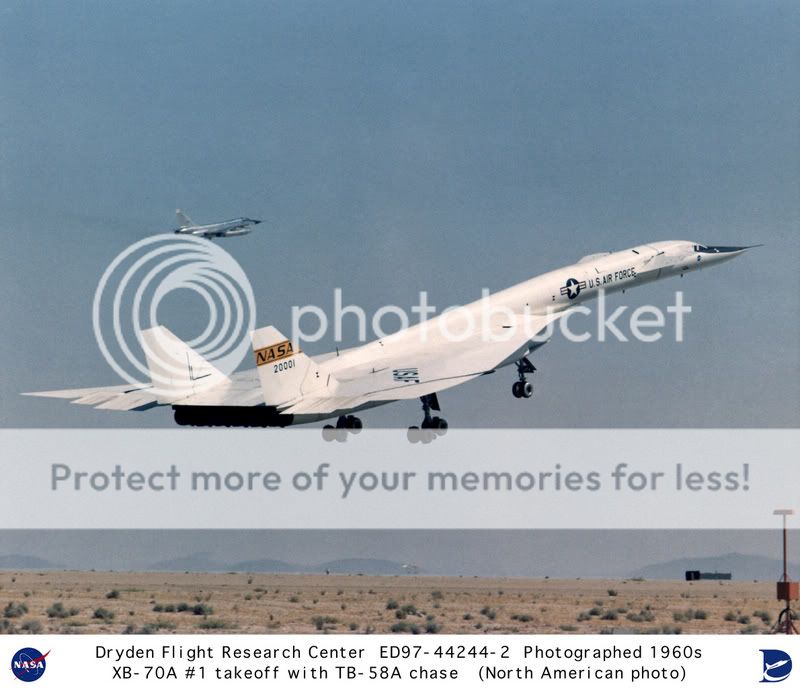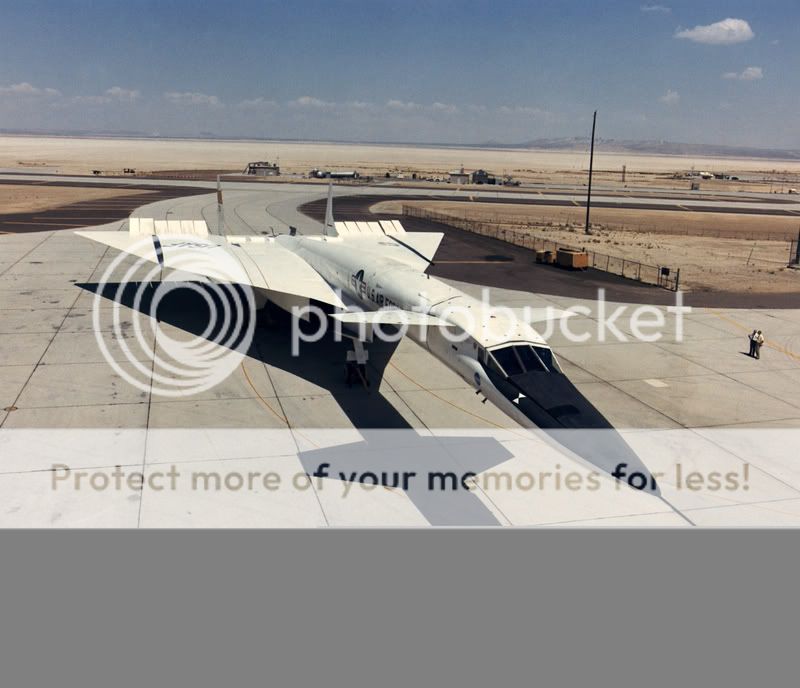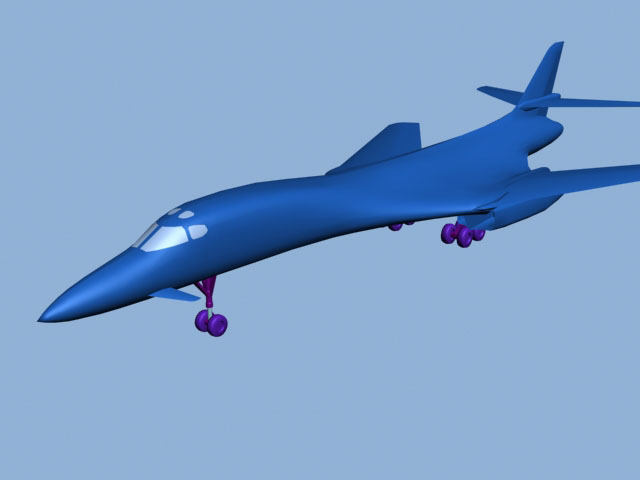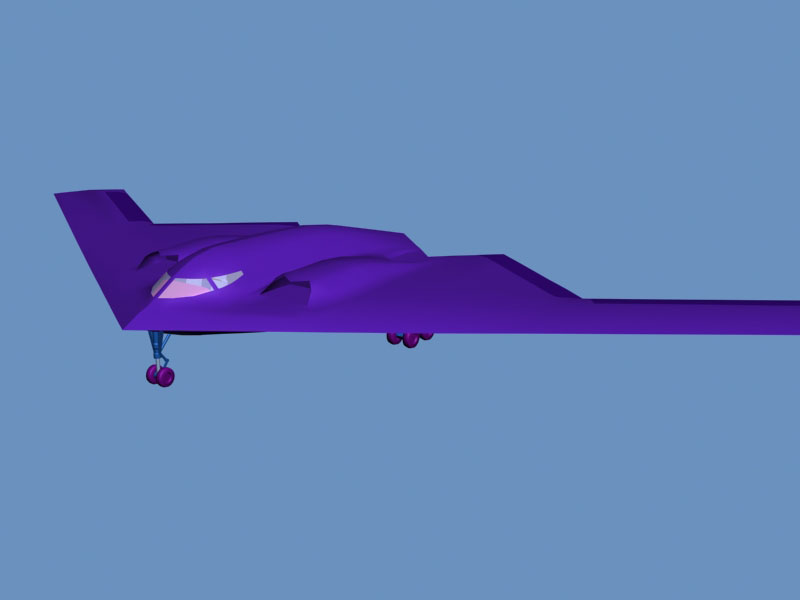-
Announcements
-

26 September - Maintenance Notification 09/21/2024
CombatACE.com will be offline this upcoming Thursday morning, September 26, 2024. The duration of this event will be 4-5 hours. Our website will be unavailable and return an error during that time. Maintenance of our equipment is unavoidable, and this downtime will allow the opportunity to replace worn and damaged fans, power supply units, and thermal paste throughout all our equipment. Thank you for reading our maintenance advisory.
-
-
Content count
8,142 -
Joined
-
Last visited
-
Days Won
16
Posts posted by FastCargo
-
-
Fast low level intrusion missions.....I can just hear all of my DAS equipment failing, lol. Speaking of...do you know if TDS is going to be modeled, I haven't heard much about the SF Bone ad-on.I'm not sure...I don't know:
A) How well TK's sims model ECM and the different techniques.
B) How well that can be implemented by Marcfighter.
Heck, I'm not even sure LOMAC does all the different ECM techniques...
FastCargo
-
Ack! my Afterburner got screwed up somehow even though I can't remember ever doing anything to it, or overwriting it. I've reinstalled Deuces effects pack and overwritten everything, but nothing gets fixed.The AB particle effect acts like if the TGA file isn't there and displays slightly colored, untextured squares. See attached picture.
Stupid question for ya:
1. Is it just your F-16, or all aircraft that use AB? When I first downloaded the Lightning, it did the same thing until I had it reference a specific afterburner tga file.
2. Does the referenced TGA file exist? If so, delete it (make a BACKUP), then pick another AB effect (use the AB effect pack I saw here on CA), rename it to the name of the file you just deleted, and move it to the proper directory.
If you've done all this, and it still doesn't work, then I'm at a loss...
FastCargo
-
F-22 crosses the date line and computer nav. locks up. And cannot be rebooted.I guess USAF pilots are not trained in dead reckoning anymore?
Hmmm...let me think. Let's risk several multi million dollar aircraft on the assumptions that my airspeed is correct (every 10 KIAS off at altitude equals .05 mach - 1/2 a mile per minute - 30 NM per hour), the winds are correct (10 knots cross - 10 NM per hour), the air density is correct (a 2000 ft PA change - 10 KIAS change) and you take in the mag variance change and the compass card doesn't drift. Oh, and you have no ground references for at least 4 hours travel because you're over an ocean that covers 1/3 of the planet. For a training exercise.
And forget cel nav...know any fighter pilots who carry cel nav tables and a sextant?
Tell ya what, go bungee jumping...doesn't sound quite as stupid as the above scenario.
FastCargo
-
in a no wind situationYea, what he said!
FastCargo
-
A quick explanation of what the differences in indicated, calibrated, true airspeed, and ground speed.
Basically, a airspeed indicator measures the amount of air molecules passing through the instrument...the more molecules, the more airspeed the instrument registers. This is indicated airspeed (KIAS)...the speed that the wings 'see'.
Calibated airspeed (KCAS) is simply KIAS corrected for things like instrument error, installation error, etc. Usually not too different from KIAS.
True airspeed (KTAS) is where you get your big difference. KTAS is the speed through the mass of air. Air itself becomes less dense as you go up in altitude. This requires you to increase your KTAS to get the same amount of KIAS/KCAS (less molecules per volume...so you have to go through more volume to get the same amount of air molecules). KTAS also gives you a better picture of how you are doing reference the speed of sound.
Ground speed (GS). KTAS with the effects of wind taken into account. Example: If you are moving at 100 KTAS pointed north, but the mass of air is moving 100 KTAS to the south (wind is blowing to the south at 100 KTAS) your GS is effectively zero.
KCAS, KTAS, and GS theoretically are all equal at sea level, assuming a standard day at sea level.
Hope that makes sense...
FastCargo
-
Wasn't sure if this goes into The Pub or here.
I don't know how many of you guys know this, but we do something for Vietnam War POWs that were flying for the USAF at the time. Basically, the idea is that we don't want the last flight they had in the USAF to be the flight they got shot down in.
So 34 years ago, we started giving 'Fini Flights' to repatriated POWs in T-38s at Randolph AFB. It's turned into a ceremony, with a wreath at the 'Forget Me Not' memorial, a missing man flyby (of which the ex-POW was actually in) and later on that afternoon, a 'pass in review' of various USAF aircraft...usually everything from T-37s to C-5s. Some more info:
http://www.randolph.af.mil/news/story.asp?id=123045400
I was scheduled for the flyby's (both of them...missing man and composite for the evening), but got rained out this year...:|.
So I couldn't get airborne photos this year, however, I took some interesting photos of the heritage portion of the squadron.
The main hall of freedom flyers. The photos are of completed fini flights, in front of the T-38 he was flown in, with the ex-POW usually getting soaked by a bottle of champagne.
Right side of the hall, including a map of Vietnam with markers showing location, date, and number (associated with a specific POW name)of downed aircrew.
Left side of the hall, with a large painting of a T-38A.
Statue of Rob Risner - Senior Ranking Officer (SRO) of the 'Hanoi Hilton' from Sept 1965 until repatriation.
We have a POW/MIA room dedicated to the those Vietnam POWs - picture of the left side of the room:
Close up of the display cabinet:
Right side of the POW/MIA room:
Close up of the display cabinet:
I thought that this ceremony and flights were a unique way to honor those men who sacrificed and suffered so much.
FastCargo
-
-
Do you think they will make a trainer version of the F/A-22 Raptor? Or are they going to rely on simulater time?I doubt it. Modern aircraft (even fighters) are easy to fly...proper employment is the hard part.
For the USAF, F-15 and F-16 dual control sorties are only a small part of the syllabus. The F-117 and A-10 don't even have dual seat models (the N/AW A-10 prototype doesn't count).
FastCargo
-
But as an american the SU-33KUB in the side by side araingement would seem a little akward.Actually, up until very recently, the US Air Force's primary jet trainer was a side by side seat. In a lot of ways, it was preferred because you (as the IP) can see exactly what the student is doing.
FastCargo
-
in the real world of course, the crew can select emerging targets linked up to them and drop. The B-1 for example will go out with 84 JDAMS and just "hang out" on call for targets linked up from the troops on the ground. So the squad lead can deliver "500lb grenades" precisely wherever he wants them.I didn't know Bones had been cleared to drop 500 lb JDAMs.
But I just did a little research, and the wiki:
http://en.wikipedia.org/wiki/B-1_Lancer
Says it's only capable of carrying 17 of the 500lb JDAMs (referencing the MX loading document in a 6 6 5 config).
Now, I'm not trying to be a 'rivet counter'...I looked it up because I was curious. When I flew Bones 10 years ago, we had 3 types of racks. 1 rack could carry 28 Mk82 500lb bombs, 1 rack could carry 10 CBUs, 1 rack was a rotary rack, and was used to carry 'specials' and SRAMs, later adapted to Mk84 2000lb bombs and JDAMs. 1 rack fits in 1 bay...a Bone has 3 bays...you get the idea.
17 is an odd number...you would think you could at least carry the 500lb JDAMs on the same rotary rack as the 2000lb ones...giving you 24. Or if the tail kits were just a little too long compared to a standard 500lb 'slick' or ballute, that would explain only 6...but why only 5 in the last bay.
81 standard Mk82s is a little odd too. The configuration we flew with was a 24 24 24 setup...why was there one taken out in the new doc? Maybe there is a new box in the aft bay that precludes carrying one weapon...which might also explain the odd 17 500lb JDAM setup.
I also read a B-2 recently did a test with the 500lb JDAMs, dropping 80 inert warhead 500lb JDAMs in a single sortie. Oh man, to have that capability in an aircraft. You could take out an ENTIRE airfield in one pass (buildings, aircraft, runway, trucks)...
Anyway, I just thought 17 was an odd number, I like 82 JDAMs much better!
FastCargo
-
Thanks guys!
I flew Bones about 10 years ago, so that's where my expertise lies. They've gotten some better upgrades since then, and so do a lot more med/high alt stuff. Safer, and more effective with JDAM...but not as fun to simulate.
Interesting story about the B-58s. I knew an old B-58 guy who told me about similiar missions he would fly with 4 ships...low and haulin the mail testing ADC. However, B-58s didn't have the range the russian article states...no way they could have done East coast to Edwards down low.
I'm surprised about the BUFF speed of 480...most ex-BUFF guys I flew with said 360 was the standard low level speed with 480 dash...but this was G and H models in the early 90s. Could have been further restricted to increase the life of the airframe...or I could be totally out to lunch!
Ah yes, PLZT goggles. We had the shields...of course, it was like flying looking through a soda straw...glad we went conventional only.
Jug, seen a few of your posts here...I was at Beale for a couple of tours, including my last active tour in T-38As. Would love to live there...if I could afford it! Still friends with several Deuce guys...and even got a alt chamber ride in a space suit with them.
FastCargo
PS As Jedi mentioned, use retarded bombs (Snakeyes or ballutes). 'Slicks' will get you killed down low...or won't even arm. Actually, the USAF doesn't use Snakeyes anymore...ballutes are more reliable, and you could user select to go 'slick' if you needed to change the delivery type.
-
absolutely correct. In fact I will say that it is ALWAYS how fast you yank the stick, not how far.same thing in a car. trying going down the freeway at 80 and taking the exit at the last second by "yanking" the wheel in a microsecond and count how many times your car rolls...........
I lost several friends over the years when their aircraft came apart in flight due to overstress loads.
I would also say, at what airspeed counts for a lot. Near corner velocity, you or the wings go at max rate pull. Near min speed...mainly you'd just buffet a lot up until stall.
FastCargo
-
If they could merge a clickpit with an touchscreen LCD....I "might" be happy. Even a real pilot has to take his hands off the stick or throttle to select a function...This is the primary way I would like a clickable cockpit. It's fast and intuitive. Combine it with a HOTAS and TrackIR and your immersion would go up dramatically.
Without the touchscreen LCD, I would only like it for MFD buttons.
FastCargo
-
In anticipation of the B-1Bs release for SFP1/WOV/WOE, I figured I'd come up with a quick employment primer for those looking to lay the smack down old school style.
This discussion will not deal with modern B-1B employment (ie at medium/high altitude with JDAMs). Instead, this will deal with late 80s/early 90s conventional employment with mass attack weapons(Mk 82s and CBUs).
Speed, speed, and, oh yeah, speed!
We hear all the time more than a few fighter cliches': "Speed is life", "Don't be out of airspeed, altitude and ideas","Some of the most useless things are runway behind you, altitude above you, and airspeed you don't have". These are all good summaries, and especially apply to Bone operations. However, we do give up altitude for the low-level enviroment. So, for low level B-1B ops, the formula is: Speed minus altitude = respect for your surroundings.
Don't be that guy with your hair on fire who promptly splatters himself on the rocks because he wasn't paying attention. The PK of the ground is 99.9% and they don't call her 'Mother' Earth for nothin'...
Why 'Heavy Metal' Rocks!
Heavy bombers give you advantages that a fighter can't give you without a lot of support.
Weapons mix and match. Bombers can carry multiple types of weapons in one aircraft. A B-1B in particular can carry 3 types of weapons (and a lot of them) at the same time (Mk82s for runway attack, CBUs for anti-personnel, and JDAMs for hardened shelters).
Multiple targets. One aircraft can attack different targets (and even different types of targets) in one flight.
Range and loiter. Bombers by their very nature have tons more fuel, translating into greater range/loiter time...reducting tanker support.
Flexibility. This all adds up into a platform than can do several things in one mission, from CAS, runway denial all the way to strategic attack like power stations, C&C nodes, etc. And can provide multi-wave support and retasking. And the Bone brings one more thing to the table.
Response time. Because of the Bones' speed, it can quickly respond to pop-up taskings with minimal travel time...something no other bomber in the inventory can do as quickly, and most fighters can't do because of range issues.
Advantages of 'penetrating' fast and low.
The low altitude enviroment (less than 1k) provides several advantages for a high speed bomber.
Short horizon distance. The lower you are, the closer the threat needs to be before he 'sees' you over the horizon...which translates to less time to detect, track, and engage for him.
Stealth. Ground based detection systems have less range the lower you go...increasing your chances of staying hidden until on the attack run.
Night/adverse weather. Because of the B-1Bs TF system, you can stay low and fast in bad weather or at night. Airborne threats may have more issues attempting successful engagement in this enviroment due to lack of those same TF systems. More than one fighter has ran out of gas or collided with the ground trying...
Some things to consider about the 'fast and low'.
A bomber is not a fighter! You don't have the G's available to rate turn defeat a missle...and any turns you make for an airborne threat simply provides closure. Your best defense (besides certain manuvers to defeat radars, jamming techniques, and expendibles) is to RUN!
Your turns at 9 miles a minute (540 knots) are huge! Don't be making egress turns that put you right over another threat because you didn't take that into account.
You are a level bombing platform. No pop-ups, dive attacks, or loft bombing. Also, because you carry all weapons internally, you can't be in a bank while dropping...otherwise you risk putting a weapon into a bomb bay door. This means, at some point on the target run, you have to either abort the run entirely, or disregard manuvering for threats to get your 'stick' on proper alignment for the target.
Length of your 'stick'. A B-1B can carry 84 500 lb GP bombs or 30 CBUs. It takes time to puke all those weapons out in a full bay drop. At the minimum, 20ms interval ripple time, a full bay drop takes 1.7 seconds, and will take up almost 1600 feet of length. This works out to a bomb interval of 18 feet between bomb impacts (which gives a high probability of failure due to fracticide). So, either less speed (not a good idea), less bombs (maybe, except for a runway attack), or greater ripple interval (which makes your stick bigger...so to speak).
You are faster than most aircraft down low. Most fighters do not have a 540 knot run in speed except in short speed dashes. You (in a B-1) do 540 knots while smoking a Lucky...and can exceed Mach 1+ without much effort.
'Bone-ing' the enemy, and living to tell (or Don't Tell) about it.
Plan, plan and plan! Determine your optimum threat and attack axis early. Give yourself a range of degrees for attack if you can. This may be easy for point attacks, harder for things like runways or a row of parked aircraft.
Take what you need. Have the proper bombload for the target. Remember, CBUs are great for soft targets, GPs better for larger structures, runways, etc.
Let the other guys go first. If there is a plan for taking out AAA/SAMs first, hey, let those guys do it. Sometimes in SFP1/WOV/WOE, the default plan has you in hot first. In a Bone, the VERY first guy will get lucky...the rest, not so much. That's why you have gas...can you say loiter until ready?
Multi axis. Your AI wingman aren't too smart sometimes. You usually won't need more than 1 wingman...the rest will end up just being cannon fodder. Instead, use the planning screen to move the IP and post strike points. Then, when you get to the IP/target run, designate your target, have your wingman attack, while you move off to make the same attack from a separate axis...increasing survival rate, and plus it looks cool!
The crappier the conditions, the happier you are. Night/AW is your friend...plan if you can...
Sometimes, the shortest way isn't the fastest. Remember those turn rates...or lack thereof? Sometimes the fastest way to get out of a threat area is to go into it. Example, on a Florida-shaped country, if you're attacking Tampa, in the time it takes you to turn all the way around and egress north or south...you could have left a Mk82 calling card in Daytona Beach on your egress.
Use it or lose it. Burner exists for a reason. For those wondering about IR signature increase...let me tell you a story. In night ops in the Bone (of which I did plenty), whenever a Bone was a mil power (non burner), you could see the tailpipes glow a dull red...from the ground. Run to avoid the gun!
Hopefully, these tidbits will help you survive to fly and fight another day in the Bone. Good luck!
Expect edits, corrections, and additions as I dredge up more info from my past.
FastCargo
-
The Americans are known to have built some ugly planes themselves.

Don't be mad at me, I love them both !!!
Cheers.
Oh no, you didn't just say the lovely Norse god Valkyrie was ugly did you? I know you didn't!
Yea, actually, she's pretty ungainly on the ground or slow.
At Mach 3+ though...she lives up to her heritage. It's too bad we never produced her...she would have made a great first stage for an orbital version of the X-15...
FastCargo
-
Congrats Dave,
Get better soon!
FastCargo
-
automatic bombing aid for automatic ground lock and some how to tweek in multiple target lock so we can hit multiple target .
Not for me thanks. When I flew it, we did it old school style...radar offset and lay down a 'stick'. 84 Mark 82s or 30 CBUs will definitely get your attention...:).
FastCargo
-
USAFMTL,
Good luck with your recovery bud. Surgery is never fun...and recovery can be a trial. Best wishes bud...
FastCargo
-
beautiful targets for Flankers.




Oh my goodness!! About time my favorite bomber got some screen time...
I've been having to use the F-111 instead...but you need 3 1/2 of them to equal one full bay drop in a Bone...
FastCargo
-
Yea, I remember old F-105 and F-4 pilots telling me of the switch layouts back in the day...talk about byzantine! Commerical aircraft were just as bad...there were major improvements just from the 727 to the DC-10. And the A300 was a jump above that.
The Russians have come a long way, but western designers have come farther. Things improved once human factors began to be engineered into aircraft.
I often joke the A380 will have a single button. You press it..."Preflight start"..."Preflight, complete". :).
FastCargo
-
Also, FastCargo, the latest variants of Flanker have fully adjustable seats to 25 degrees. It's not quite as comfy as you viper jocks make out, but it's better than those seats built like an L... They're part of the glass cockpit upgrade and with each new production model.I wasn't talking about seats. Seats are not as big a deal as everyone thinks...especially when you talk to viper guys (outside of the PR stuff). Seats that far back are uncomfortable to fly and fight in with your head back.
What I was talking about was control/display layout/symbology. Ergonomics is the study of man and machine and its effects on humans (taken from the definition adopted by the International Ergonomics Association in 2007). Some of the russian layouts, even in their modern aircraft, are operator hostile and will contribute to a loss of SA.
FastCargo
-
If you like that, you like this:
"25 hours at FedEx"
It's a hoot!
FastCargo
-
It's funny how software has become just as important as hardware in aviation.
The 777 has glitches that have only recently been ironed out.
Embarer is dealing with a host of issues with their new aircraft (ask JetBlue about it).
The C-17 had teething software issues at first.
Even our aircraft (T-38C) had a few problems initially, now it's great how our capabilities keep jumping up with just software upgrades....no changes to the hardware.
FastCargo
-
As someone mentioned before, the Su-27 and it's varients are beautiful and powerful aircraft...as an effective fighter, it's still an unknown for various reasons mentioned already. There are also a few other factors working against operators of said aircraft.
1) Training. Most operators can not simply afford to give the pilots the training hours and scenarios needed to stay proficient in their aircraft up to the standard of First World western eqivalents. As a part time reservist, I get 12 hours a month in a trainer aircraft. That's more than some countries give their pilots in 6 months. And I'm just a part timer. This makes the next problem worse...
2) Ergonomics. Even in modern Russian aircraft with glass, their general ergonomics are right out of the 1970s. As a human factors major, I tend to end up looking at everything from a human interface angle. When things are going great, you can get by with twitchy layouts. Not so when the sierra hits the fan. That's why 'sensor fusion' is such a big deal...the idea of being able to consolidate the various inputs an aircraft gets and sort it in one easy to interpret method for the pilot. I can't emphasize how important this is...and how it's only going to get more critical as more sensors are integrated into the battlespace. If your pilot's head explodes because he can't integrate all the info he's getting, it's all over...
FastCargo










Arcade games
in The Pub
Posted
The original Battle Zone...with Missile Command a close second...those were my first and most fun...
Then, when I got a LITTLE older, the first Star Wars game (you know, the one with the Tie Fighters, Gun Towers, then the Trench Run...).
Awesome dude! :)
FastCargo